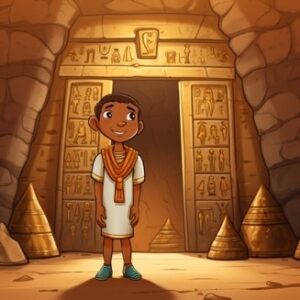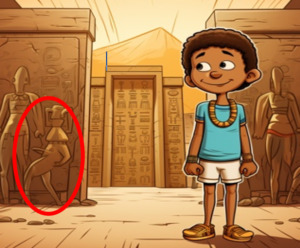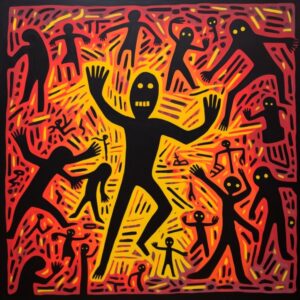What does this Website Privacy Policy Cover?
We want to be transparent with you (consumers, our clients and work seeking candidates) about how we collect and use your Personal Data when you visit our website, www.thrive.co.uk or any other Thrive web property or service referencing this Privacy Policy (collectively, the “Website”). We understand the importance of privacy, and we strive to keep personal information confidential.
With that in mind, this Website Privacy Policy is designed to describe:
EU-wide data protection legislation known as the “General Data Protection Regulation” or “GDPR” (a copy of which is posted here), took effect from May 25th, 2018. The Website Privacy Policy is intended to meet our duties of Transparency under the GDPR and all other applicable privacy laws.
We will post any modifications or changes to this Website Privacy Policy on this page.
Who we are.
We are Thrive Education. We are a UK company, company registration number 12980148 Our address is: 6th Floor, Alexandra Warehouse, West Quay, Gloucester, Gloucestershire, GL1 2LG.
When we refer to “Thrive”, “we” or “us” in this Website Privacy Policy, we are referring to Thrive Education Limited.
We have appointed a “Data Protection Officer”, this is a person who is responsible for overseeing and advising us in relation to our compliance with the GDPR and our compliance with this Privacy Policy. If you want to contact our Data Protection Officer directly, you can email: dataprotection@thrive.co.uk
What we do.
Thrive are a joint data controller under the definitions of GDPR.
We are a recruitment business which provides work-finding services to its clients and work-seeking candidates. Thrive Education must process personal data (including sensitive personal data) so that it can provide these services.
You may give your personal details to Thrive Education directly, such as on an application or registration form or via our website, or we may collect them from another source such as a jobs board. For the purposes of providing you with work-finding services and/or information relating to roles relevant to you we will only use your personal data in accordance with the terms of this Website Privacy policy.
Cookies.
We do not collect data from cookies whilst you browse our public pages of the Site.
What “Your Rights” are.
When we process your personal data, we will retain a copy of all “Personal Data” processed in respect of each work finder application for a period of seven years after such confirmed placement has been completed (“Retention Period”) to enable us to respond to any enquiries in respect of such placement; we then delete any Personal Data held related to any placement on expiry of the Retention Period. Similar with our clients and advertisers, we will retain a copy of your personal data for Thrive Education account information for a period of one (1) year after you may decide to deactivate your account for the same purpose of responding to enquires on any work finder application you may have been party too.
Your Individuals Rights
A: Right to be informed – When we process data, the processing is fair and deemed necessary in the fulfilment of a contract. We have ensured our Privacy Policy is up to date to detail our processing activities and your rights as a consumer. We aim to help you with any queries you may have, please use the contact us area to get in touch.
B: Right to access – You own the right to contact us in writing to request details of the data we have about you and whom we have shared that information with.
C: Right to Rectification – You have the right to ask us to rectify the information held on you if it is inaccurate or incorrect. Thrive will be able to assist in any corrections required.
D: Right to erasure – This is also known as “the right to be forgotten”. This gives you right to request your information to be removed/erased verbally or in writing. We maintain a list of the people who have asked not to be contacted and ensure that you get no further marketing from our clients, we will also put you in touch with the other data controller to perform the same action.
E: Right to Restrict processing – You have the right to tell us to stop processing your data but allowing us to keep enough information about you to ensure that your wishes are repeated in the future.
F: Right to portable data – This gives you right to ask for your information to be transferred to another business. It enables you to take advantage of applications and services which you may wish to use.
G: Right to Object – You have the right to object to the processing of your information for marketing purposes and profiling for marketing uses. You likewise hold the right to ask us to cease processing based on a data controller’s legitimate interest, where there is no overriding justification for the processing of your information. Your rights and freedoms override a data controller’s interests.
H: Rights related to automated decision making including profiling – We don’t use automated decision-making processes which would cause a potentially damaging effect to you.
I: Right to withdraw consent at any time – You have the right to withdraw your consent at any time. Thrive will ensure we remove your consumer information. Please see below ways in which you can contact us to help:
By Email – dataprotection@thrive.co.uk
By Phone – +44 (01)1452 260 933
In Writing – The Compliance Manager/ Data Protection Officer, Thrive Education Limited, 6th Floor, Alexandra Warehouse, West Quay, Gloucester Docks, Gloucester, Gloucestershire, GL1 2LJ
J: Right to lodge a complaint – If we cannot deal with your complaint to your satisfaction you have the right to complain to a relevant supervisory authority which include;
What Personal Data we collect.
All the Personal Data we collect from you is outlined in the table below.
Before you read that table, it might be useful to explain what “Personal Data” is. The GDPR definition of Personal Data can be found here. Essentially, it boils down to: information about an individual, from which that individual is either directly identified or can be identified.
It does not include ‘anonymous data’ (i.e., information where the identity of an individual has been permanently removed).
However, it does include ‘indirect identifiers’ or ‘pseudonymous data’ (i.e., information which alone doesn’t identify an individual but, when combined with certain additional and reasonably accessible information, could be attributed to a particular person).
| Category of Personal Data collected |
What this means / includes |
How we collect it |
| Account Information |
First name, last name, email address, telephone number |
Through your active submission of our consent form / subsequent onboarding to our hosting / payroll / factoring provider |
| Additional Account Information |
Experience, training and qualifications, CV, National insurance number, Teacher reference number and NCTL check, ID and proof of address, 5 year address history, Emergency contact information, Previous names, References, Pay rate, Personal photograph
|
Through your active submission of our consent form / subsequent onboarding to our hosting / payroll / factoring provider |
| Sensitive Account Information |
Disability/health condition relevant to the role, DBS information including any unfiltered cautions and convictions, Children’s Barred List information, Disqualification and Disqualification-by-Association information, Details of any safeguarding allegations |
Through your active submission of our consent form / subsequent onboarding to our hosting / payroll / factoring provider |
| Consumer Information |
First name, last name, email address, plus any additional information you share such as:
Experience, training and qualifications, CV, National insurance number, Teacher reference number and NCTL check, ID and proof of address, 5 year address history, Emergency contact information, Previous names, References, Pay rate, Personal photograph
|
If/when you contact us with a question using our online enquiry form or email enquiry. We will not share this with third parties until a consent form is in place. |
How we use your Personal Data and why.
Thrive Education will collect your personal data (which may include sensitive personal data) and will process your personal data for the purposes of providing you with work-finding services. The legal bases we rely upon to offer these services to you are one of the following:
- Consent
- Legal obligation
- Contractual obligation
Your personal data is required by law and/or a contractual requirement (e.g. our client may require this personal data), and/or a requirement necessary to enter into a contract. You are obliged to provide the personal data and if you do not the consequences of failure to provide the data will result in Thrive Education no longer being able to work with you.
Clients and Candidates
| Purpose |
Category(ies) of Personal Data involved |
Why do we do this |
Our legal basis for this use of data |
| To provide you with access to the Thrive Education service |
Account Information (including sensitive) |
Using this data helps us to provide you with our services |
We have obtained your consent in the creation of a profile to use in work finding service.
|
| To provide reporting |
Account Information; Log Records |
We use your profile Information and records to create work finding matches |
Your consent and the legitimate interests. We need to be able collect information regarding you and your organisation to find relevant matches. |
| Troubleshooting |
Log Records |
We use Log Records to track issues that might be occurring on our systems. |
Your consent and the legitimate interests, as well as those of your organization. We need to monitor and ensure the proper operation of our systems and services to administer our services and fulfil our contractual obligations to your organisation. |
| To Contact you |
Account Information |
We use your Account Information to contact you regarding your account or our services, including to market our services to your organization. |
Your consent and the legitimate interests, as well as those of your organization. We need to contact your organisation to administer our platform and services, to fulfil our contractual obligations, and to keep your organisation informed about additional product and service offerings. |
Consumer
| Purpose |
Category(ies) of Personal Data involved |
Why do we do this |
Our legal basis for this use of data |
| To enable the answering of queries from consumers |
Your personal Information, this could include, Name, Address, Date of Birth, Email address, Telephone numbers and any other non sensitive information you may have shared with the data controllers. |
Legitimate interest, to reply to your queries |
The processing of your information could be done to either explicit consent or legitimate interest to facilitate the work finding services.
|
Who we share your Personal Data with.
The table below describes who we share your Personal Data with, what we share and why we share it.
We endeavour to ensure that people to whom we provide Personal Data hold it subject to appropriate safeguards and controls. In addition, where relevant, when we share Personal Data with third parties who are not directly subject to the GDPR, we make sure:
That party is either:
- based in a country that has laws and institutions in place; or
- part of a sector or participates in a framework (e.g., the EU-U.S. Privacy Shield),
- that the European Union considers ensures that your Personal Data will be adequately protected; or
- adequate safeguards are in place to ensure your Personal Data will be protected in line with the requirements of the GDPR.
Clients, Candidates and Consumers
| Recipients |
Category(ies) of Personal Data we share. |
Why we share this Personal Data |
| Clients & Candidates |
Account Information & Sensitive information |
We share information in order for decisions to be made when trying to create and form work finding services.
Following the successful placement. We process personal data and sensitive information between the clients, candidate, hosting providers, payroll providers and factoring companies relevant to the employment. |
| Hosting Provider |
Account Information & Sensitive information |
Our services are hosted by third parties sub processors. In order to facilitate our services, we have to pass data we hold (including your Personal Data) to our hosting provider.
|
| Payroll providers / factoring companies |
Account Information & Sensitive information |
As a group of companies, we rely on payroll providers and factoring companies to provide certain services to us. All parties are required to adhere to the descriptions and specifications set out in this Interest
These include:
● New Red Planet
● Azebra
● Quba |
| An acquirer or insolvency practitioner |
Account Information; Log Records. |
We may share Personal Data when we do a business deal, or negotiate a business deal, involving the sale or transfer of all or a part of our business or assets. These deals can include any merger, financing, acquisition, or bankruptcy transaction or proceeding. All counterparties will be required to keep such information strictly confidential. |
| Law enforcement agencies and regulatory authorities |
Account Information; Log Records. |
We may share Personal Data as we believe necessary or appropriate:
• to comply with applicable laws; and/or
• to comply with lawful requests and legal process, including to respond to requests from public and government authorities to meet national security or law enforcement requirements. |
Consumers
| Recipients |
Category(ies) of Personal Data we share. |
Why we share this Personal Data |
| Consumer Information
|
Your personal Information, this could include, Name, Address, Date of Birth, Email address, Telephone numbers and any other non sensitive information you may have shared with us. |
The processing of your information could be done to either explicit consent or legitimate interest to facilitate the work finding services.
|
How we keep your Personal Data secure.
We have put in place appropriate security measures and use encryption through technology to prevent your Personal Data from being accidentally lost, used or accessed in an unauthorised way, altered or disclosed.
We limit access to your Personal Data to those employees and other staff who have a business need to have such access. All such people are subject to a contractual duty of confidentiality.
We have put in place procedures to deal with any actual or suspected Personal Data breach. In the event of any such breach, we have systems in place to work with applicable regulators. In addition, in certain circumstances (e.g., where we are legally required to do so) we may notify you of this breach.
How long we store your Personal Data.
We will only retain your Personal Data for so long as we reasonably require it to use it for the purposes set out above, unless a longer retention period is required by law (for example for regulatory purposes).
Where Thrive Education has obtained your consent to process your personal and sensitive data, we will do so in line with our data protection policy. Upon expiry of that period Thrive Education will seek further consent from you. Where consent is not granted Thrive Education will cease to process your personal data.
The table below shows our standard retention practices:
| Category of Personal Data |
Retention period |
| Account Information on Clients |
We keep Account Information for a maximum of one (1) year from the date on which the organization account holder closes the applicable account or terminates its relationship with us. |
| Account information on Candidate |
The Conduct of Employment Agencies and Employment Businesses Regulations 2003, require us to keep work-seeker records for at least one year from (a) the date of their creation or (b) after the date on which we last provide you with work-finding services.
|
| Personal Information on Consumers |
We retain a copy of all Personal Data processed in respect of any other part of the business or request for a period of one (1) year from the date on which the organisation received an enquiry. |
| Payroll Information on Clients and Candidates |
We must also keep your payroll records, holiday pay, sick pay and pensions auto-enrolment records for as long as is legally required by HMRC and associated national minimum wage, social security and tax legislation.
|
Our policy on children.
Our websites, products and services are not intended for use by children under the age of 16.
Thrive Education, 6th Floor, Alexandra Warehouse, West Quay, Gloucester, Gloucestershire, GL1 2LG
Changes to this Privacy Policy.
How we use your Personal Information is kept under regular review and changes are published on this page. This page was last updated on the date shown at the bottom of this policy.
Third Party Links.
The Site may contain links to the websites of third parties. If you follow a link to any third party website, please note that these websites will have their own privacy policies which we would encourage you read.
Contact Us.
If/when you contact us with a question using our online enquiry form we collect your name, email address and any comments you have. We use this information (ONLY) to respond to and/or resolve your query/question. We will not share this with third parties for marketing purposes.
Thrive Education Ltd, 6th Floor, Alexandra Warehouse, West Quay, Gloucester, Gloucester, GL1 2LG
Email: dataprotection@thrive.co.uk
Tel: 07791550725
This Privacy Policy was last updated on 28th October 2020









